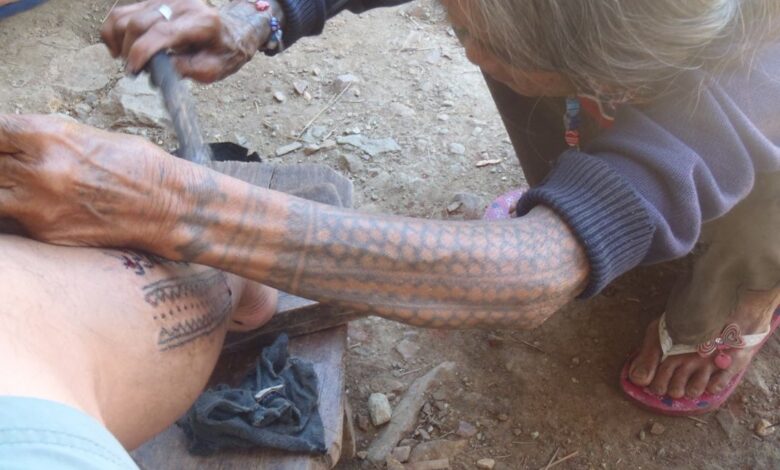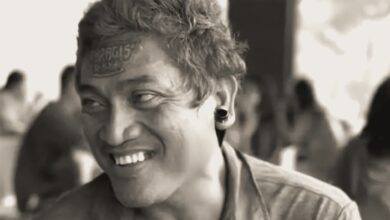
The Timeless Art of Apo Whang-Od
In the heart of Buscalan, the ancient art of batok persists, carried forward by Apo Whang-Od and her devoted descendants.
The secluded village is a challenging 12-hour journey from Manila, taking a winding path cutting through the Cordilleras. Despite the transformation of homes from traditional cogon roofing to concrete structures, and the absence of modern amenities like cell signal and widespread WiFi, Buscalan retains its unique charm.
Art Meant for the World
Apo Whang-Od, the centenarian tattoo artist, has not just witnessed but has in many ways led the evolution of her village. The venerable tattoo artist recently marked her 106th birthday, but last quarter of those years have been significant to her neighbors.
Renowned as the last mambabatok of her generation, she began her illustrious career at 16 under her father’s guidance. Over the last 15 years or so, her fame has transcended the Cordillera region, attracting visitors worldwide seeking the distinctive pain of her hand-tapped, soot-stained thorn tattoos.
READ: Hawaii-based Filipina keeping ‘batok’ tattoo method alive
Understanding a Culture
In the past, Whang-Od traveled to neighboring villages, marking individuals with sacred symbols representing significant life transitions. Men underwent intricate chest tattoos, signifying their status as headhunting warriors. For women, tattoos symbolized fertility and beautification. Whang-Od, the first and only female mambabatok of her time, has tattooed more women than warriors.
Historically, headhunting held spiritual significance, countering the colonial stereotype perpetuated by Dean Worcester in 1912. Worcester’s portrayal aimed to justify American control of Northern Luzon, branding the Kalingas as bloodthirsty savages. The practice of headhunting was a nuanced ritual, restoring balance and justice between conflicting communities.
While the tradition waned with Western influence, outside forces played a role in its revival. Dr. Lars Krutak, a tattoo anthropologist, documented Whang-Od’s craft in 2007 for a Discovery Channel series. With no biological heirs, Apo Whang-Od passed her skills to her grandniece Grace Palicas, ensuring the continuity of batok.
RELATED: Philippine Weaving Communities, an endangered species
An Undying Tradition
Today, Grace and her cousin Elyang Wigan, among others, carry on the tradition. They ink visitors who make the arduous journey to Buscalan. The practice, once endangered by changing cultural norms, has found new life through the dedication of Whang-Od’s successors. As the living legend imparts her signature three-dot seal, the pain endured becomes a small tribute to the enduring legacy of batok.




